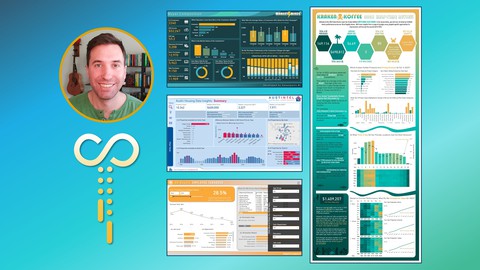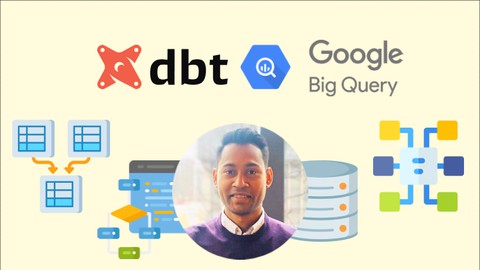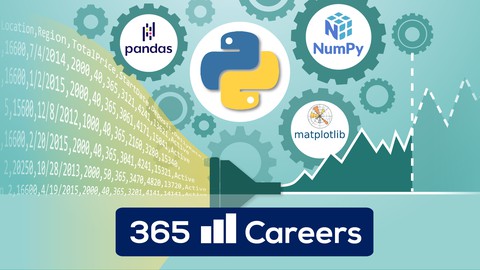Recommender Systems and Deep Learning in Python
Loại khoá học: Business Analytics & Intelligence
The most in-depth course on recommendation systems with deep learning, machine learning, data science, and AI techniques
Mô tả
Believe it or not, almost all online businesses today make use of recommender systems in some way or another.
What do I mean by “recommender systems”, and why are they useful?
Let’s look at the top 3 websites on the Internet, according to Alexa: Google, YouTube, and Facebook.
Recommender systems form the very foundation of these technologies.
Google: Search results
They are why Google is the most successful technology company today.
YouTube: Video dashboard
I’m sure I’m not the only one who’s accidentally spent hours on YouTube when I had more important things to do! Just how do they convince you to do that?
That’s right. Recommender systems!
Facebook: So powerful that world governments are worried that the newsfeed has too much influence on people! (Or maybe they are worried about losing their own power... hmm...)
Amazing!
This course is a big bag of tricks that make recommender systems work across multiple platforms.
We’ll look at popular news feed algorithms, like Reddit, Hacker News, and Google PageRank.
We’ll look at Bayesian recommendation techniques that are being used by a large number of media companies today.
But this course isn’t just about news feeds.
Companies like Amazon, Netflix, and Spotify have been using recommendations to suggest products, movies, and music to customers for many years now.
These algorithms have led to billions of dollars in added revenue.
So I assure you, what you’re about to learn in this course is very real, very applicable, and will have a huge impact on your business.
For those of you who like to dig deep into the theory to understand how things really work, you know this is my specialty and there will be no shortage of that in this course. We’ll be covering state of the art algorithms like matrix factorization and deep learning (making use of both supervised and unsupervised learning - Autoencoders and Restricted Boltzmann Machines), and you’ll learn a bag full of tricks to improve upon baseline results.
As a bonus, we will also look how to perform matrix factorization using big data in Spark. We will create a cluster using Amazon EC2 instances with Amazon Web Services (AWS). Most other courses and tutorials look at the MovieLens 100k dataset - that is puny! Our examples make use of MovieLens 20 million.
Whether you sell products in your e-commerce store, or you simply write a blog - you can use these techniques to show the right recommendations to your users at the right time.
If you’re an employee at a company, you can use these techniques to impress your manager and get a raise!
I’ll see you in class!
NOTE:
This course is not "officially" part of my deep learning series. It contains a strong deep learning component, but there are many concepts in the course that are totally unrelated to deep learning.
"If you can't implement it, you don't understand it"
Or as the great physicist Richard Feynman said: "What I cannot create, I do not understand".
My courses are the ONLY courses where you will learn how to implement machine learning algorithms from scratch
Other courses will teach you how to plug in your data into a library, but do you really need help with 3 lines of code?
After doing the same thing with 10 datasets, you realize you didn't learn 10 things. You learned 1 thing, and just repeated the same 3 lines of code 10 times...
Suggested Prerequisites:
For earlier sections, just know some basic arithmetic
For advanced sections, know calculus, linear algebra, and probability for a deeper understanding
Be proficient in Python and the Numpy stack (see my free course)
For the deep learning section, know the basics of using Keras
For the RBM section, know Tensorflow
WHAT ORDER SHOULD I TAKE YOUR COURSES IN?:
Check out the lecture "Machine Learning and AI Prerequisite Roadmap" (available in the FAQ of any of my courses, including the free Numpy course)
UNIQUE FEATURES
Every line of code explained in detail - email me any time if you disagree
No wasted time "typing" on the keyboard like other courses - let's be honest, nobody can really write code worth learning about in just 20 minutes from scratch
Not afraid of university-level math - get important details about algorithms that other courses leave out
Bạn sẽ học được gì
Understand and implement accurate recommendations for your users using simple and state-of-the-art algorithms
Big data matrix factorization on Spark with an AWS EC2 cluster
Matrix factorization / SVD in pure Numpy
Matrix factorization in Keras
Deep neural networks, residual networks, and autoencoder in Keras
Restricted Boltzmann Machine in Tensorflow
Yêu cầu
- For earlier sections, just know some basic arithmetic
- For advanced sections, know calculus, linear algebra, and probability for a deeper understanding
- Be proficient in Python and the Numpy stack (see my free course)
- For the deep learning section, know the basics of using Keras
Nội dung khoá học
Viết Bình Luận
Khoá học liên quan

Đăng ký get khoá học Udemy - Unica - Gitiho giá chỉ 50k!
Get khoá học giá rẻ ngay trước khi bị fix.


















Đánh giá của học viên
Bình luận khách hàng